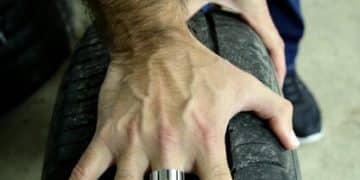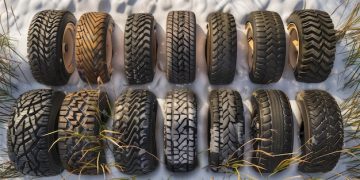Road Trip Ready? Your 2025 Car Inspection Checklist!
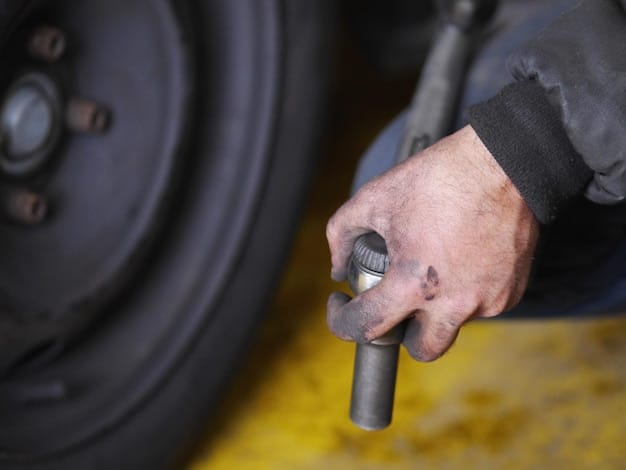
Ensure your car is road-trip ready for 2025 with our comprehensive 20-point inspection checklist, covering essential checks from tire health and fluid levels to brake performance and emergency kit preparedness, guaranteeing a safe and enjoyable adventure.
Planning a road trip for 2025? Is your car road-trip ready? A 20-point inspection checklist for 2025 adventures is crucial. Don’t let a breakdown ruin your vacation. Let’s get started!
Plan Your Route and Understand Potential Hazards
Before even thinking about your car’s mechanical condition, the first step is planning. Route planning can drastically affect the type of wear and tear your vehicle will experience. Understanding potential hazards ahead of time ensures you’re prepared for anything.
Researching Road Conditions
Knowing if your route includes off-road trails, mountainous terrains, or long stretches of highway is essential. Different conditions require different preparations.
Identifying Potential Weather Issues
Check the weather forecast for your entire route and adjust your packing and vehicle preparations accordingly. Extreme heat, cold, or rain can all impact your car’s performance.
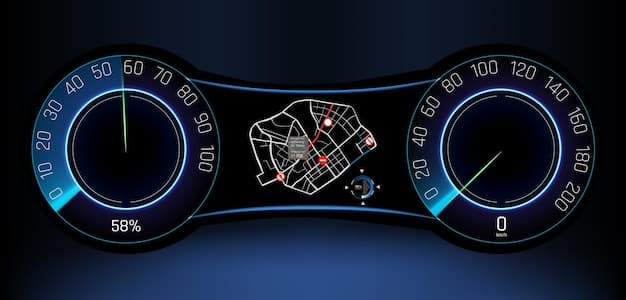
Exterior Checks: Lights, Tires, and Body
The exterior of your car is the first line of defense against the elements. A thorough check ensures you’re visible to other drivers and that your car can handle the road ahead.
Checking Headlights, Brake Lights, and Turn Signals
Ensure all lights are functioning correctly. Replace any burnt-out bulbs. This is critical for visibility, especially during night driving or inclement weather.
Inspecting Tire Condition and Pressure
Check the tire tread depth and look for any signs of wear or damage. Ensure tires are inflated to the correct pressure, as indicated on the tire placard or in your owner’s manual.
- Tire Tread Depth: Use a tire tread depth gauge to ensure sufficient tread.
- Tire Pressure: Adjust tire pressure according to the manufacturer’s recommendations.
- Visual Inspection: Look for cuts, bulges, or embedded objects in the tires.
Under the Hood: Fluids and Filters
What’s under the hood dictates how well your engine runs. Proper maintenance of fluids and filters ensures longevity and reliability.
Checking Engine Oil Level and Condition
Ensure the oil level is within the recommended range. Also, check the oil’s color and consistency. Dark or gritty oil indicates it’s time for an oil change.
Topping Off Coolant, Brake, and Power Steering Fluids
Check the levels of coolant, brake fluid, and power steering fluid. Top off as needed. Leaks in any of these systems should be addressed immediately.
Inspecting Air Filter and Cabin Air Filter
A clean air filter ensures your engine gets the air it needs to run efficiently. A clean cabin air filter improves air quality inside the car, making the journey more pleasant.
Brakes and Steering: The Importance of Control
Your car’s braking and steering systems are crucial for safety. Ensuring these systems are in top condition can prevent accidents.
Testing Brake Performance and Inspecting Pads/Rotors
Listen for any unusual noises when braking and ensure the car stops smoothly. Have a mechanic inspect the brake pads and rotors for wear.
Checking Steering Alignment and Power Steering Function
If your car pulls to one side or the steering wheel vibrates, it’s time for a wheel alignment. Also, ensure the power steering system is functioning smoothly.
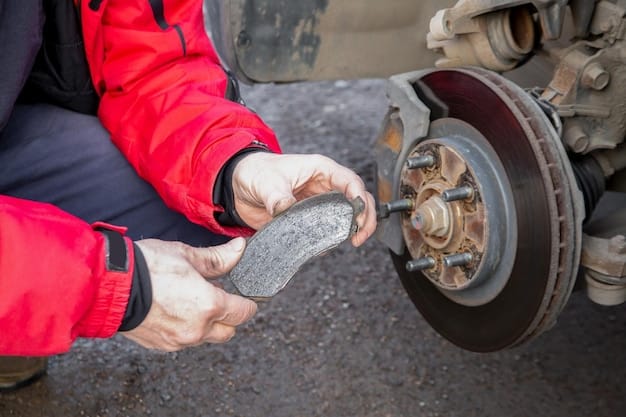
Essential Systems: Battery, Belts, and Hoses
These components often go unnoticed until they fail. Regular checks can prevent unexpected breakdowns.
Testing Battery Health and Connections
Ensure the battery terminals are clean and free of corrosion. Have the battery tested to ensure it can hold a charge.
Inspecting Belts and Hoses for Wear and Cracks
Look for cracks, fraying, or looseness in belts and hoses. Replace any that show signs of wear to prevent them from breaking during your trip.
Interior Comfort and Safety
A comfortable and safe interior makes the journey more enjoyable and secure. Checking these elements ensures a pleasant driving experience.
Checking Air Conditioning and Heating Systems
Ensure both the air conditioning and heating systems are functioning correctly. This is essential for maintaining a comfortable temperature inside the car, regardless of the weather outside.
Ensuring Proper Function of Seatbelts and Airbags
Check that all seatbelts are in good working condition and that the airbags are functioning correctly. These are critical safety features.
Emergency Preparedness: Be Ready for Anything
No one wants to think about emergencies, but being prepared can make all the difference. Having the right equipment and knowledge can turn a potential disaster into a minor inconvenience.
Assembling an Emergency Kit with Jumper Cables, First Aid, and Tools
Include jumper cables, a first aid kit, basic tools, a flashlight, and reflective triangles. These items can help you handle common roadside emergencies.
Verifying Spare Tire Condition and Inflation
Ensure your spare tire is in good condition and properly inflated. Also, make sure you have the necessary tools to change a tire.
- Spare Tire: Check for proper inflation and any signs of damage.
- Tools: Ensure you have a lug wrench and jack.
- Emergency Supplies: Include water, snacks, and blankets.
These emergency supplies could be vital if you are traveling through a remote area.
Final Checks: Documentation and Miscellaneous Items
Before hitting the road, a few final checks can save you from potential headaches.
Confirming Insurance and Registration are Current
Ensure your insurance and registration are up to date. Driving with expired documents can lead to fines or other legal issues.
Checking Windshield Wipers and Washer Fluid
Ensure your windshield wipers are in good condition and that your washer fluid is full. Clear visibility is essential, especially in rain or snow.
Professional Inspection: When to Seek Expert Help
While a personal inspection is valuable, a professional mechanic can identify issues you might miss. Knowing when to seek expert help can save you time and money in the long run.
Scheduling a Pre-Trip Inspection with a Trusted Mechanic
A mechanic can perform a thorough inspection, identifying potential problems and making necessary repairs before your trip.
Addressing Any Identified Issues Promptly
Don’t delay repairs. Addressing issues promptly can prevent them from becoming more serious and costly.
By following this comprehensive 20-point inspection checklist for 2025 adventures, you can ensure your car is road-trip ready, making your journey safe, enjoyable, and memorable.
| Key Point | Brief Description |
|---|---|
| 🗺️ Plan Your Route | Research road conditions & weather for a safer journey. |
| 💡 Check Lights | Ensure headlights, brake lights, and signals are functioning. |
| 🛢️ Inspect Fluids | Check and top off engine oil, coolant, brake, and steering fluids. |
| 🩹 Emergency Kit | Assemble a kit with jumper cables, first aid, and basic tools. |
Frequently Asked Questions
▼
A pre-road trip car inspection is crucial for ensuring safety and preventing breakdowns. Identifying and addressing potential problems before you leave can save you time, money, and stress on the road.
▼
You should check your tire pressure at least once a month and before any long trips. Proper tire pressure improves gas mileage, handling, and reduces the risk of blowouts. Consult the sticker on your driver’s side door for recommended PSI.
▼
Your emergency car kit should include jumper cables, a first aid kit, a flashlight, reflective triangles, basic tools (like a wrench and screwdriver), water, non-perishable snacks, and a blanket. Tailor the supplies to the season and your route.
▼
You should replace your windshield wipers every six months to a year, or sooner if you notice streaks, skipping, or reduced visibility during rain or snow. Functioning wipers are essential for safe driving.
▼
Signs of a failing car battery include slow engine cranking, dim headlights, a swollen battery case, or needing frequent jump-starts. Have your battery tested by a professional to determine its condition.
Conclusion
Ensuring your vehicle is road-trip ready involves a blend of proactive inspections, timely maintenance, and emergency preparedness. By diligently working through this checklist, drivers can minimize unexpected issues and enjoy a safer, more pleasant journey in 2025.
